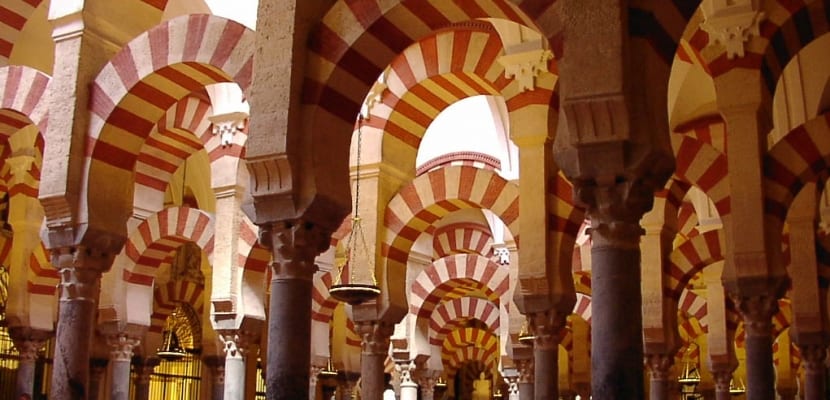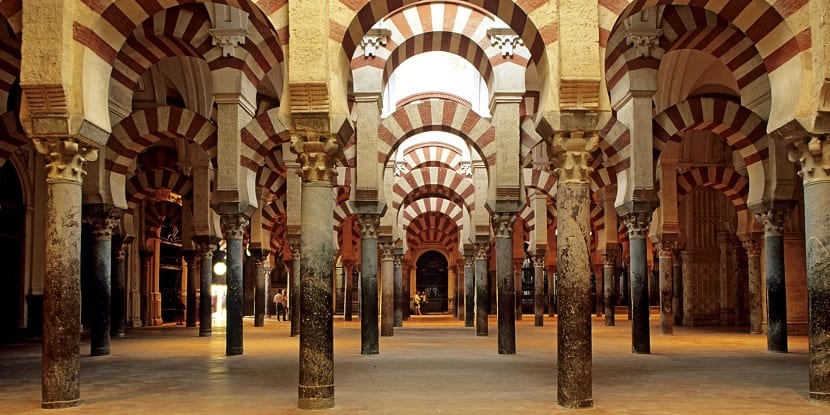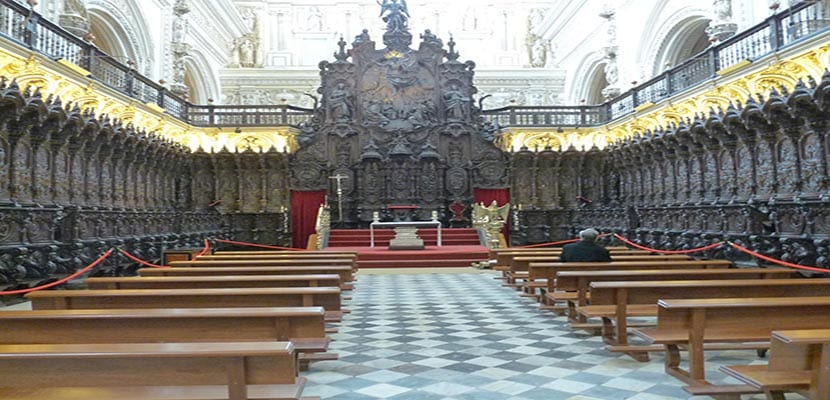
The Mosque- Cathedral of Córdoba
Spain is one of the countries that attracts the most tourists each year thanks to its excellent combination of gastronomy, culture, beaches, parties and ecotourism. Its monuments and museums are world-famous and widely visited, so it is not surprising that in The latest ranking of the best Tourist Interest Sites of 2017 prepared by the Travelers' ChoiceTM awards has ten Spanish sites of interest: three recognized with awards at European level and two in the world top.
The Cathedral-Mosque of Córdoba has been awarded as the best site of interest in Spain and Europe and has the third position in the world taking the first place from last year to the Basilica of San Pedro of the Vatican in Italy. Without a doubt, this Cordovan temple is one of the places that arouses the most interest among international, European and Spanish travelers. But why has he managed to win this recognition?
History of the Cathedral-Mosque of Córdoba

The Cathedral-Mosque of Córdoba, located in the historic center of the city, represents one of the most beautiful examples of Islamic art in Spain.
During the Middle Ages, the Emir Abderrahm I ordered to build the temple on the old Visigothic church of San Vicente, whose archaeological remains can still be identified in the monument. In the years to come, the mosque underwent successive extensions. With Abderrahman III a new minaret was erected and with Alhaken II, around the year 961, the floor of the building was widened and the mihrab was decorated.
The last of the reforms would be carried out by Almanzor a few decades later. As a result, the interior took on the appearance of a labyrinth of columns of great beauty characterized by double arches and a horseshoe arch. The decoration is of Byzantine mosaic and carved marbles, the mihrab being the most noble piece in the mosque and one of the most important in the Muslim world.
During the Reconquest, King Ferdinand III the Holy entered Córdoba in 1236 and converted the Muslim temple into a Christian one. Centuries later, after the Christian conquest, the cathedral was built in its interior in which the main rattan, the baroque altarpiece and the mahogany wood choir stalls stand out.
Interior of the Cathedral-Mosque of Córdoba

Composed of nineteen naves, the hypostyle room was the main room of the temple that was used as a prayer room. Currently it is occupied by some chapels attached to the walls, by the chapels of the Villaviciosa axis and by the central cruciform nucleus formed by the choir and the main chapel.
Once inside, the main chapel, the choir and the retrochoir form the nucleus of the Cathedral-Mosque of Córdoba. Leaving the choir you can see the chapels that surround the nave.
Turning to the right is, first, the sepulchral lauda of the Five Bishops and this is followed by the chapel of the Sweet Name of Jesus, separated from the rest of the temple by a magnificent fence. In addition to them, the Chapel of San Pelagio, the Chapel of Santo Tomás and the Chapel of the Lost Child are very interesting.
The interior also highlights the transept, which has five arches, of which four are for chapels. However, two other very interesting elements of the Cordoba mosque are the maqsura (area reserved for the caliph) and the mihrab (niche that indicates where to pray and that in the Cordoba temple does not face Mecca), which were built during the expansion of Alhaken II.
Among the charms of this Cordovan place is the Patio de los Naranjos, which has its origin in the ablution courtyard of the Abderramán I mosque. Its name comes from the orange trees that were planted during the XNUMXth century in rows.
In addition, there are two very interesting fountains here: the Santa María fountain (in the Baroque style built in the second half of the XNUMXth century) and the Cinamomo fountain (from the XNUMXth century).
The Cathedral-Mosque of Córdoba is modernized
During 2016, the Cordovan temple received the visit of 1,6 million tourists and it is expected that with the recent award of the Travelers' ChoiceTM awards that figure may increase throughout this year. That is why the Cabildo has decided to embark on an ambitious project of technological modernization in tourism, which will mean that in 2017 tourists will be able to buy their tickets online and schedule their visits as happens in the Alhambra in Granada.
Ranking of the best Tourist Interest Sites 2017

- Angkor Wat (Siem Reap, Cambodia)
- Sheikh Zayed Mosque (Abu Dhabi, United Arab Emirates)
- Cathedral-Mosque of Córdoba (Córdoba, Spain)
- St. Peter's Basilica of the Vatican (Vatican City, Italy)
- Taj Mahal (Agra, India)
- Church of the Savior on Spilled Blood (Saint Petersburg, Russia)
- Great Wall of China at Mutianyu (Beijing, China)
- Machu Picchu (Machu Picchu, Peru)
- Plaza de España (Seville, Spain)
- Duomo di Milano (Milan, Italy)
- Golden Gate Bridge (San Francisco, California)
- Lincoln Memorial (Washington DC, District of Columbia)
- Eiffel Tower (Paris, France)
- Parliament (Budapest, Hungary)
- Notre Dame Cathedral (Paris, France)
Ranking of the Best Sites of Tourist Interest in Europe 2017
- Mosque-Cathedral of Córdoba (Córdoba, Spain)
- St. Peter's Basilica of the Vatican (Vatican City, Italy)
- Church of the Savior on Spilled Blood (Saint Petersburg, Russia)
- Plaza de España (Seville, Spain)
- Duomo di Milano (Milan, Italy)
- Eiffel Tower (Paris, France)
- Parliament (Budapest, Hungary)
- Notre Dame Cathedral (Paris, France)
- Big Ben (London, UK)
- Acropolis (Athens, Greece)
- Market Square (Krakow, Poland)
- The Alhambra (Granada, Spain)
- Michelangelo Square (Florence, Italy)
- Tower of London (London, UK)
- Charles Bridge (Prague, Czech Republic)